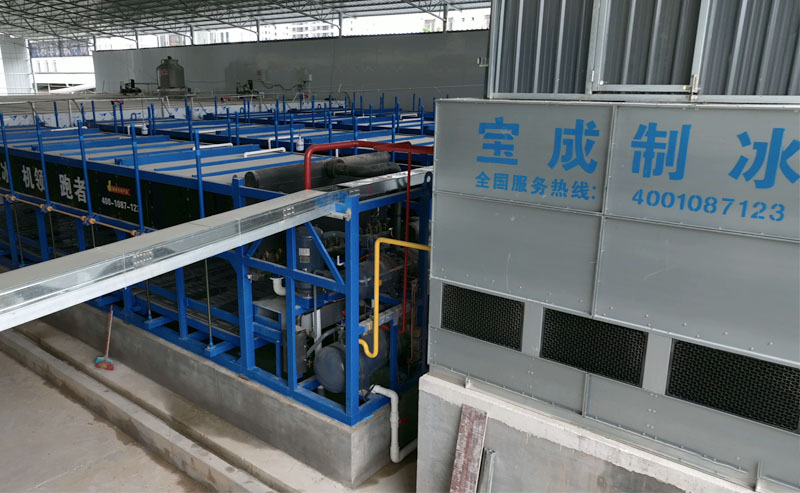 October 23, 2025
October 23, 2025


The ice business represents an often-overlooked yet highly profitable sector within the refrigeration and food service industries. With consistent demand across multiple market segments—from hospitality and healthcare to construction and fisheries—starting an ice business offers entrepreneurs a stable revenue stream with strong profit potential.
The ice-making industry has evolved significantly from simple ice harvesting to sophisticated manufacturing processes capable of producing various ice types for specialized applications. This guide provides a comprehensive overview of the essential steps, considerations, and strategies for launching and growing a successful ice manufacturing operation.

Thorough market research forms the foundation of any successful ice business venture. Understanding current demand patterns, competitive forces, and potential growth segments will inform your business strategy and investment decisions.
The ice making industry serves diverse customer segments with varying requirements. The global cube ice market alone is expected to grow from $519.45 million in 2025 to $857.32 million by 2034. Focus your research on these high-demand areas:
Conduct regional assessments to identify underserved markets. Evaluate existing ice machine plant solutions in your area, their production capacities, ice types (block, cube, tube, flake), and pricing strategies. This intelligence will help you identify gaps in the market that your business can fill.
A thorough competitive analysis should examine:
This analysis will help you identify market opportunities where you can differentiate your ice business, whether through superior product quality, specialized ice forms, responsive delivery services, or competitive pricing.
Starting an ice business requires significant upfront investment in equipment and infrastructure. Carefully planning these investments ensures you have adequate capitalization while avoiding unnecessary expenses.
Investment requirements vary significantly based on your planned operation scale:
Table: Ice Business Startup Costs by Operation Size
| Expense Category | Small Ice Operation | Medium Ice Plant | Large-Scale Facility |
| Equipment Costs | $50,000 - $100,000 | $100,000 - $300,000 | $300,000+ |
| Facility Setup | $20,000 - $50,000 | $50,000 - $100,000 | $100,000 - $200,000 |
| Utilities Installation | $10,000 - $30,000 | $30,000 - $60,000 | $60,000 - $100,000 |
| Licensing & Permits | $5,000 - $15,000 | $15,000 - $25,000 | $25,000 - $40,000 |
| Initial Working Capital | $10,000 - $20,000 | $20,000 - $40,000 | $40,000 - $75,000 |
Selecting the right equipment is critical for your ice machine plant solutions. The choice between different types of ice makers depends on your target market and their specific needs:
Your equipment investment should also include auxiliary systems:
Understanding your complete cost structure is essential for pricing strategy and profitability projection:
Fixed Costs:
Operational Costs:
Energy-efficient equipment, while sometimes more expensive initially, can reduce electricity consumption by 15-30%, leading to substantial operational savings.
The ice making industry is subject to various regulations that vary by jurisdiction. Proper licensing ensures legal operation and demonstrates quality commitment to potential customers.
Key regulatory considerations include:
Consult with local regulatory agencies early in your planning process to understand specific requirements in your area. Implement a Hazard Analysis Critical Control Point (HACCP) system to ensure product safety and simplify compliance documentation.
Efficient operations separate profitable ice business ventures from those that struggle. Streamlining production, maintaining quality standards, and controlling risks are essential for long-term success.
Develop a production scheduling system that matches your ice making cycles with order patterns. Different ice types have varying production timelines:
Implement a comprehensive quality control system that includes:
Building diverse sales channels protects your business from market fluctuations and maximizes production capacity utilization:
B2B Sales Focus:
B2C Expansion Opportunities:
Effective B2B marketing is particularly crucial, as approximately 70% of B2B buyers research products online before making purchasing decisions.

The ice making industry offers attractive profit potential for well-managed operations. Understanding your profitability drivers and planning strategic growth will maximize your return on investment.
Well-maniced ice operations typically achieve:
Table: Ice Business Revenue Streams and Profit Potential
| Revenue Stream | Price Range | Target Margin | Key Customers |
| Bulk Ice Sales | $0.05 - $0.15/lb | 15-25% | Fisheries, construction, factories |
| Packaged Retail Ice | $2.00 - $5.00/20lb bag | 30-45% | Convenience stores, supermarkets |
| Specialty Ice Products | $0.20 - $0.50/lb | 40-60% | Premium bars, healthcare facilities |
|
Subscription Delivery |
Varies by volume | 25-35% | Regular commercial customers |
Strategic growth options for established ice businesses include:
The ice business represents a stable, recession-resistant opportunity with multiple paths to profitability. By thoroughly understanding market dynamics, making strategic equipment choices like the appropriate direct cooling block ice machine or industrial tube ice making machine, implementing efficient operational processes, and developing diverse sales channels, you can build a sustainable business serving this essential market.
The global packaged ice market continues to demonstrate strong growth potential, with increasing demand across both commercial and consumer segments. Whether you focus on bulk industrial supply, premium hospitality ice products, or retail packaged ice, success comes from delivering consistent quality, reliable service, and competitive value to your customers.
Ready to launch your profitable ice business? Our experts at BAOCHARM specialize in helping entrepreneurs design and equip successful ice machine plant solutions with the right direct cooling block ice machine and industrial walk in freezer room configurations for their specific market needs. Contact us today for a personalized consultation and equipment proposal tailored to your business goals.
Our Contacts
Email: sales@baocharm.com
WhatsApp: +86 17663537579
Wechat: +86 17663537579
Working Hours: Mon ~ Sat 8:30 AM - 5:30 PM